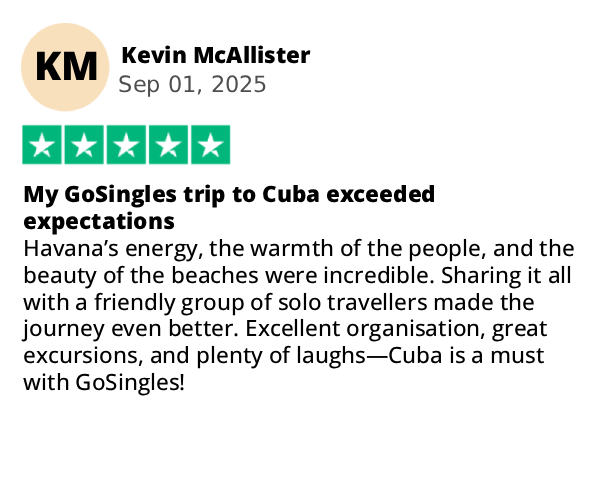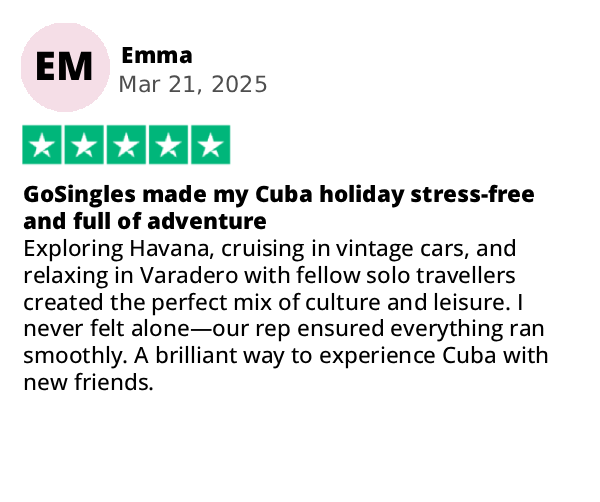
SINGLES HOLIDAYS TO CUBA – PERFECT FOR SOLO TRAVELLERS
Cuba is one of the most exciting destinations for singles holidays, offering a unique blend of history, music, and sunshine. Single travellers can immerse themselves in Havana’s colourful streets, classic American cars, and lively salsa rhythms, before relaxing on the white sands of Varadero. Cuba solo holiday is all about exploring by day and sharing experiences with like-minded people in the evening. From guided tours of colonial landmarks to cocktail nights and beach parties, every moment is designed to bring solo travellers together. You’ll never feel out of place, as group dinners and optional excursions create the perfect balance of independence and friendship. Whether you’re looking for culture, relaxation, or adventure, singles holidays in Cuba promise unforgettable memories. Travel solo with confidence and embrace the rhythm of this captivating island while making new friends along the way.
TRUSTED BY SOLO TRAVELLERS









